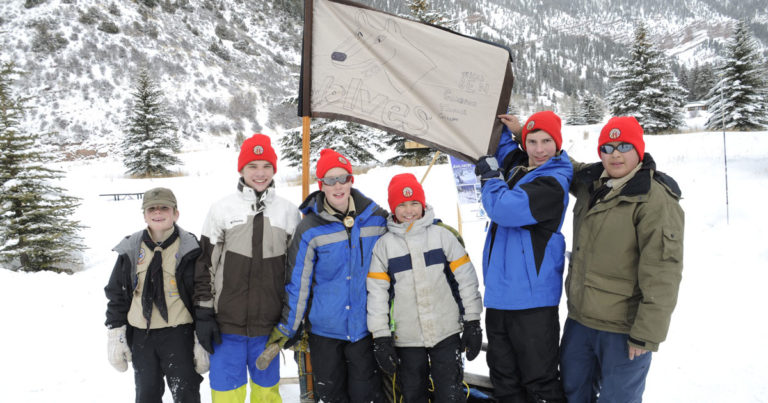The age-old question: How is your troop organized into patrols?

 In some troops, incoming Scouts form a new-Scout patrol. In others, new Scouts are integrated immediately into a patrol with older boys.
In some troops, incoming Scouts form a new-Scout patrol. In others, new Scouts are integrated immediately into a patrol with older boys.
There’s no one-size-fits-all technique, but there are upsides and downsides to each approach.
For this Tuesday Talkback, I’ll share the BSA’s recommendations and ask you to make a case for your preferred method of patrol organization.
What is a patrol?
As I’ve mentioned before, the patrol method isn’t one way to run a troop. It’s the only way.
But what is a patrol? Vol. 1 of the Troop Leader Guidebook defines a patrol as a subgroup of the troop consisting of approximately eight Scouts.
“It is the place where boys learn skills, take on leadership responsibility for the first time and develop friendships that will often last a lifetime,” the Guidebook notes.
What is the mixed-age approach?
This is from the Guidebook:
Historically, patrols were made up of Scouts of all ages and ranks. This approach offers several advantages:
- Each patrol always has members who need to learn Scouting skills and members who are able to teach those skills.
- Each patrol always has experienced leaders and members who need leadership experience.
- Patrols thus are fairly evenly matched for games and skill competitions.
- All members don’t “age out” at the same time.
The downside of the mixed-age approach is that Scouts who are 10 years old and Scouts who are 17 years old often have little in common. Moreover, Scouts making the transition from a Webelos Scout den may benefit from a more gradual change.
What is the three-type approach?
The Guidebook makes a strong case for having three types of patrols: new-Scout patrols, regular patrols and older-Scout patrols.
New-Scout patrols
As the name implies, a new-Scout patrol serves Scouts who have just joined the troop. The patrol elects its own leader, just like other patrols, but usually for a shorter term— perhaps one month instead of six months. An older Scout called a troop guide works with the Scouts to help them get acclimated to Boy Scouting and to reach the rank of First Class. Backing up the troop guide is an assistant Scoutmaster whose main responsibility is to work with new Scouts.
Scouts typically remain in a new-Scout patrol for their first year in the troop or until they reach First Class rank (whichever comes first), although the transition happens sooner in some troops. At that point, members can either choose which regular patrol they want to join or opt to stay together as a regular patrol.
In some troops, Scouts join a patrol together and stay together throughout their time in the troop.
Regular patrols
Members of a regular or traditional patrol have similar interests and abilities. They enjoy spending time together and may well be friends outside of Scouting. Ideally, they have chosen to be in the same patrol.
The only time a Scout should be assigned to a patrol is when he first joins the troop.
Traditional patrols typically serve Scouts who have reached First Class rank or completed the seventh grade. However, a new Scout should join a traditional patrol if there are not enough newcomers to form a new-Scout patrol or if he was invited to join the troop by an older buddy.
Many troops assign an assistant Scoutmaster—called a patrol advisor—to each patrol. The patrol advisor advises and supports the patrol leader but does not take over his responsibilities in any way.
Older-Scout patrols
Not to be confused with Venturing crews, older-Scout patrols serve older Scouts who want to pursue more challenging high-adventure outings and sports activities while remaining in the troop. These Scouts often have a been-there-done-that attitude, so their patrol activities offer them new challenges while keeping them involved in troop leadership. You might think of the older-Scout patrol as a safety valve; it lets older Scouts blow off steam and then willingly re-engage with the troop.
An assistant Scoutmaster is assigned to the older-Scout patrol to help the members turn their outing ideas into action. He or she works to ensure that patrol activities complement, rather than conflict with, troop activities and may also guide the members along the trail to Eagle Scout rank.
What about splitting up friends?
Scouting magazine covered this subject in our May-June 2012 issue.
The consensus of that article, based on conversations with academics experts and Scout leaders, was that forcing friends into separate patrols is a bad idea.
Scouters who break up friends may cause Scouts to rebel or leave Scouting altogether. “I have had boys hide out in the back of troop trailers to get with their friends and avoid work,” says David Smith, a counselor and Scouter from Jacksonville, Fla. “If they were with their friends working together on a project they wanted to do, they would have less reason to bail on the rest of their patrol.”
What’s your take?
How are your patrols organized? Make your case in the comments section below.
The age-old question: How is your troop organized into patrols?
